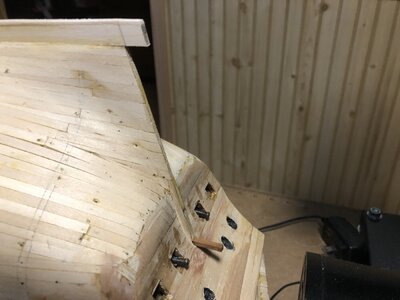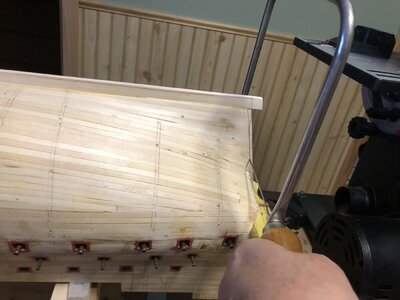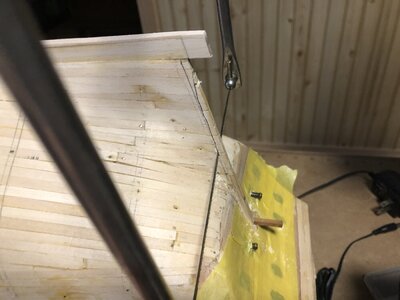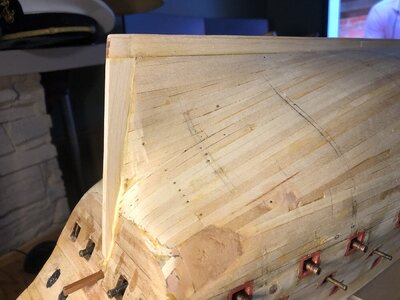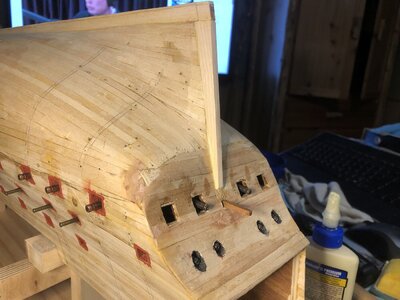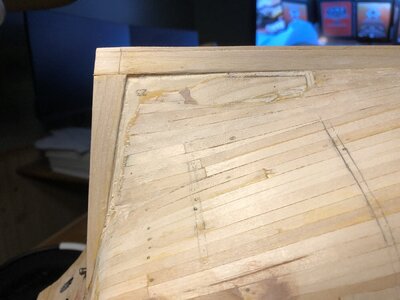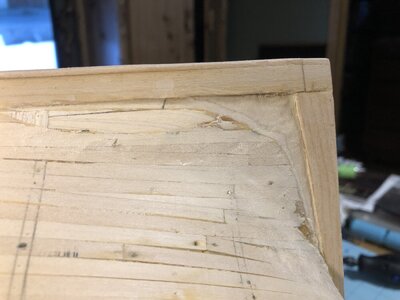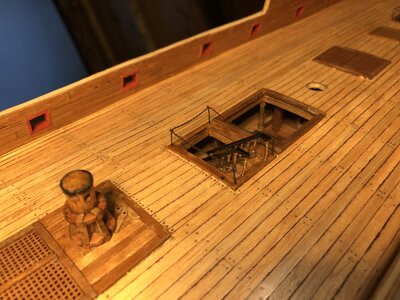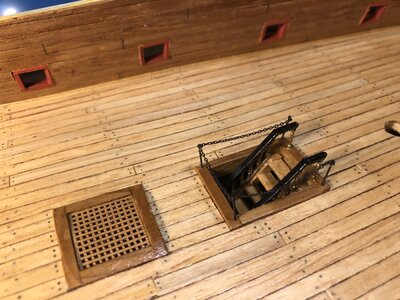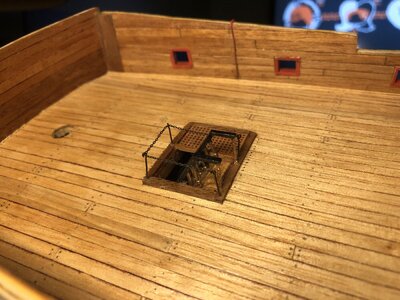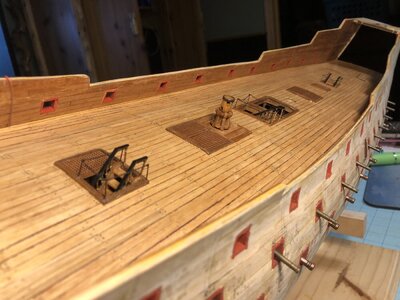Thanks Daniel! I'm not afraid of cutting things, reshaping things, or making additions to a model AS LONG AS I have a research source to back it up, whether it be a picture, a reference book, an old painting, or even a feature from someone else's blog which was verified by other sources. Experience with tools like the band saw and sanding block, and figuring out the easiest methods with the tools I have makes the work go rather fast. Not being afraid of mistakes, and accepting that there will be some things that need total re-working takes away the fear of bashing. People are always too afraid to take on a complex project because mistakes will be be made, many of them easily fixed, some of them serious. If that stops you, then you can't achieve great things by your own choice. Example: I forgot to make the whipstaff and decked over the structure that the whipstaff needed to be held it. But, after some thought, a way of getting that feature into the ship was figured out, but it meant boring holes in the hull in carefully measured locations, and attaching the whipstaff to the tiller with out much access. Many would just skip the whole thing and made a false whipstaff to preserve the detail. No way. I wanted a WORKING whipstaff, because it's fun to play with. Thinking outside the box allows you to fix what most would think unfixable and salvage projects that most would discard in disgust.
The work on the Sovereign is not all that precise in that there are always things that are a little uneven, or gaps on the edges of an inlay, or a rather poor wood finish because I don't know finishing all that well, but it's getting the details as close as I can that occupies most of my efforts. One should remember that a lot in a kit is just wrong or oversimplified. I've bene using cheaper porous woods like basswood for structural work, and walnut, mahogany and cherry on finished areas, and they just don't look as good as shiny polished boxwood, but I don't have any boxwood, so the finish suffers. When you use crappy wood like basswood or plywood on viewable finished areas, like most kits supply, it looks like crap unless painted, so you don't get any wood grain to show off. I also need to learn how to weather things a bit so the model doesn't look like a model, and more like a real ship in miniature. I'm going to try washes in dark colors to bring out some details. I was thinking that after painting the bottom greyish white, washing the entire bottom with thinned brown or black paint would bring out some grain contrast, and hopefully the plank lines just a small bit, so the hull doesn't look like it was molded in plastic. I have no experience weathering, so it's going to be interesting.
 , fixed that little problem was going to add the sternpost, except there was something in the way... So, What do we need?
, fixed that little problem was going to add the sternpost, except there was something in the way... So, What do we need?